Royal Navy aircraft carrier HMS Prince of Wales has transited north through the Bab al-Mandab Strait and entered the Red Sea on October 27, according to satellite imagery and ship-tracking data.
The move marks the carrier’s return from its Indo-Pacific deployment as it makes its way toward the Mediterranean.
The eight-month mission, Operation Highmast, has been one of the most extensive Royal Navy deployments in years. HMS Prince of Wales led a multinational carrier strike group through the Indian and Pacific Oceans, operating alongside naval forces from Japan, South Korea, Norway, Canada, Spain, and other allies. The deployment aimed to reinforce partnerships, expand interoperability, and demonstrate the UK’s ability to project power across global sea lanes.
HMS Prince of Wales through the Bab al-Mandab Strait on the 26th, now in the Red Sea, Mediterranean bound. pic.twitter.com/xoi02slLTU
— Britsky (@TBrit90) October 27, 2025
Earlier this year, the carrier had entered the Indo-Pacific via the Suez Canal and the Red Sea, beginning the eastern leg of her deployment. By September, the strike group was operating in the Sea of Japan, conducting complex joint exercises with Japan’s Air Self-Defense Force and South Korea’s Navy. The drills included coordinated flight operations between British F-35B Lightning II jets and Japan’s F-15 and F-35A aircraft, as well as advanced medical evacuation and damage-control simulations involving allied vessels.
The strike group includes destroyer HMS Dauntless, frigate HMS Richmond, support ship RFA Tidespring, and partner vessels such as Norway’s Roald Amundsen. Around 4,500 British personnel are supporting the deployment, including sailors, Royal Marines, soldiers, and RAF aircrew. The group’s onboard medical teams, reinforced by the Maritime Medical Emergency Response Team (MMERT), also recently conducted a series of high-intensity training missions that tested their rapid-response capability at sea.
For its transit through the Red Sea, HMS Prince of Wales has been joined by a United States Navy Arleigh Burke-class destroyer. The US vessel is part of the multinational effort to safeguard maritime traffic amid continued attacks by Yemen’s Houthi movement.
Since late 2023, the Iran-backed Houthis have targeted commercial and naval vessels in the Red Sea and Bab al-Mandab Strait, prompting a joint response under Operation Prosperity Guardian, led by the United States and United Kingdom.
British warships, including Type 45 destroyers, have previously intercepted incoming drones and missiles in the region, protecting shipping lanes vital to global trade.


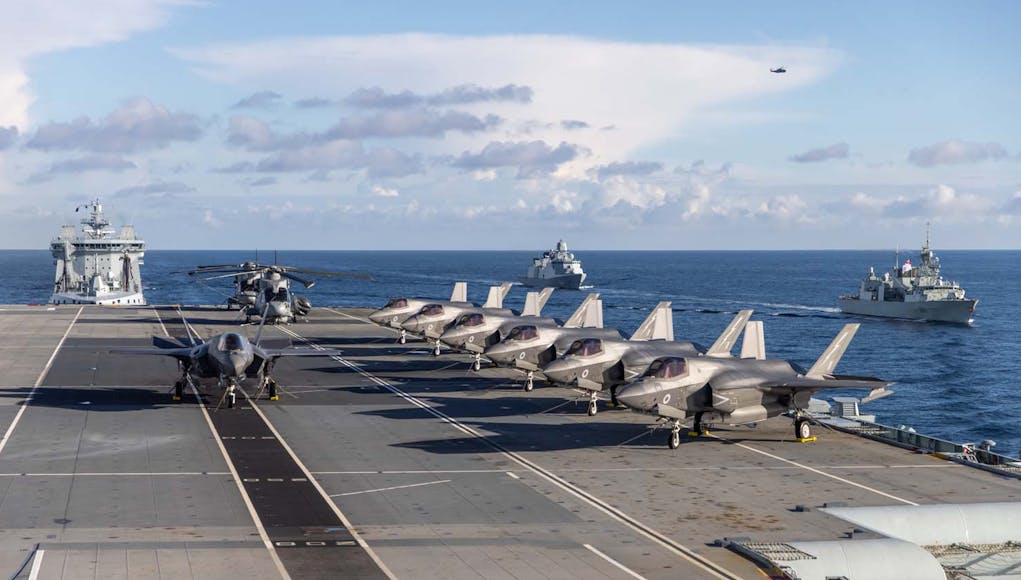

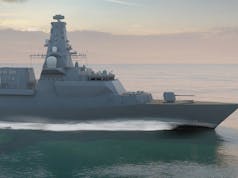
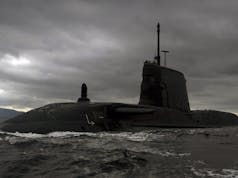
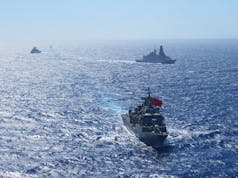




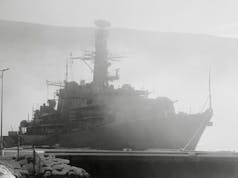


Isn’t it about time we accepted that with emasculated F-35Bs, the QE ‘strike carriers’ are really just oversized LPHs?
Now once through Suez fisheads repeat this mantra daily. “Must not lose another F35 in the Med”….
Ugly rumours and echoes of Cameron are circulating that only one carrier will be at sea at a time. Storing a carrier for a couple of years was the traditional way of coping with operational costs, but to me it’s the thin end of the wedge. Men in grey suits love such a situation as they can use the argument if one will do, why do you need two? I fear such a policy will lead to a Bulwark situation and sell-off.
They spent a lot of time showing it off to India….
i said this and was ridiculed. India has a history of buying used RN carriers and operating VSTOL. I can’t think of a more likely buyer if one was to be sold. I would be ok with it if RN then ordered an additional 4 escorts and the RAF another 36 Typhoons. That might better balance things
The issue with this is that India no longer needs to buy carriers from abroad. They’re more than capable of building their own, and the growing nationalistic sentiment around Indian naval procurement means that a foreign purchase would not draw widespread support. This is in addition to India’s dislike for the F-35, expressing far greater interest in the Russian Su-57, French Rafale and domestic programmes. India would be procuring a carrier without the aircraft required to operate it as a carrier, meaning that they’d have three options:
– Operate the carrier as a purely helicopter- or drone-based platform
– Fund a costly refit programme to fit the carrier with arresting cables
– Fund an extremely costly programme to purchase F-35B aircraft, or to develop their own STOVL system.
None of those are appealing options. For the first, there are much cheaper (and domestic) ways of achieving the same effect. The latter two are either prohibitively expensive or rely on major foreign support.
I highly doubt we’ll lose the carriers.
There is a lot of ridicule dished out on here. People need to be more open minded. We have a socialist gooberment who would sell their grannies for cash. It would also do away with the need for more F35b’s…..And a rough estimate is a QE class could operate the Indians present naval fighters. Though with the “free trade” deal Starmer signed with them anything is possible.
This was always the plan. There was never a serious intention to operate both carrier strike groups at the same time.
Correct, but the truth never really bothers most of the doomsayers here.
If both were still new and if both didn’t suffer from various breakdowns, then both would have probably been sailing around for a few years at the same time subject to various mainrtenence stops but we all know that these were never intended to be out there together in the longer term.
Various “Rumours” have been doing the rounds for decades now, I shouldn’t worry about them, It’s just people talking.
This trip seems to have been a fantastic and worthwhile adventure, finally showcasing their ability and capability to be on the other side of the world, not many other countries can do that.
When she comes back, she’ll be in for a deserved period of maintenence and upgrades with QE taking her place.
I’m hoping we will get to see the long and often promissed 24 F35B’s (UK) on her decks sometime soon.
If we can keep hold of both, they will soon have new escorts which combined, would make quite the spectacle/capability.
If they stood down a carrier that be such bad optics to save some running costs? We moan about our carriers but who is particularly happy? Steam catapults are over but replacement is not fully proven. And carrier jets, ask the French. I wish them well.
Why do we repeat history with our defence equipment?
Blair wanted to be on a par with America, but originally we were to partner with the French on carriers. The French pulled out due to economy
Blair originally wanted to share design costs with France some argument for a franco Anglo carrier arrangement. They pulled out and brown wanted jobs in Scotland. Sorted
By all accounts a successful deployment. Congratulations to all on the months of hard work making it happen.
Exactly my thoughts too.
Hopefully dispels the myth they “break down.” Lets get back to Pompey
Exactly, our carrier strike ability might have taken far longer to generate than we had all hoped, but that is mainly down to drip fed funding in procurement and poor decision making like Crowsnest.
It’s reaching a level of maturity now, once the F35B improves its availability and UK weapons are integrated ( or US alternatives are fielded) and we have capable drones on deck, CS will be a very capable tool to reach for.
The increase in funding should facilitate this relatively quickly I hope.
Well, the carriers haven’t broken down. Unfortunately, there were those two unfortunate incidents with the F-35Bs in India and Japan, which, whilst not operationally serious, have produced some poor optics for the RN and RAF.
Agree a good trip involved friends and potential friends we need to protect democracy.
Anyone know the status of Dauntless? She had to skip several exercises in order to undergo an assisted defect rectification period in Singapore. If she hasn’t rejoined the CSG (or isn’t fully operational) than I assume that at least one USN Arleigh Burke destroyer is escorting the CSG through the Red Sea and providing air defence.
She’s with the CSG, this was confirmed soon after they left Singapore. You can see her in the satellite images.
There is also an American destroyer, presumably for additional BMD capability.
Yes, the American DDG is reportedly USS Mitscher (DDG-57). If so, she’s one of the Flight Is that received the full Aegis Baseline 9 upgrades. Though the ship is old, the Aegis capabilities are among the most advanced available.
We still have the icing on the cake to look forward to: 24 British F-35s on deck.